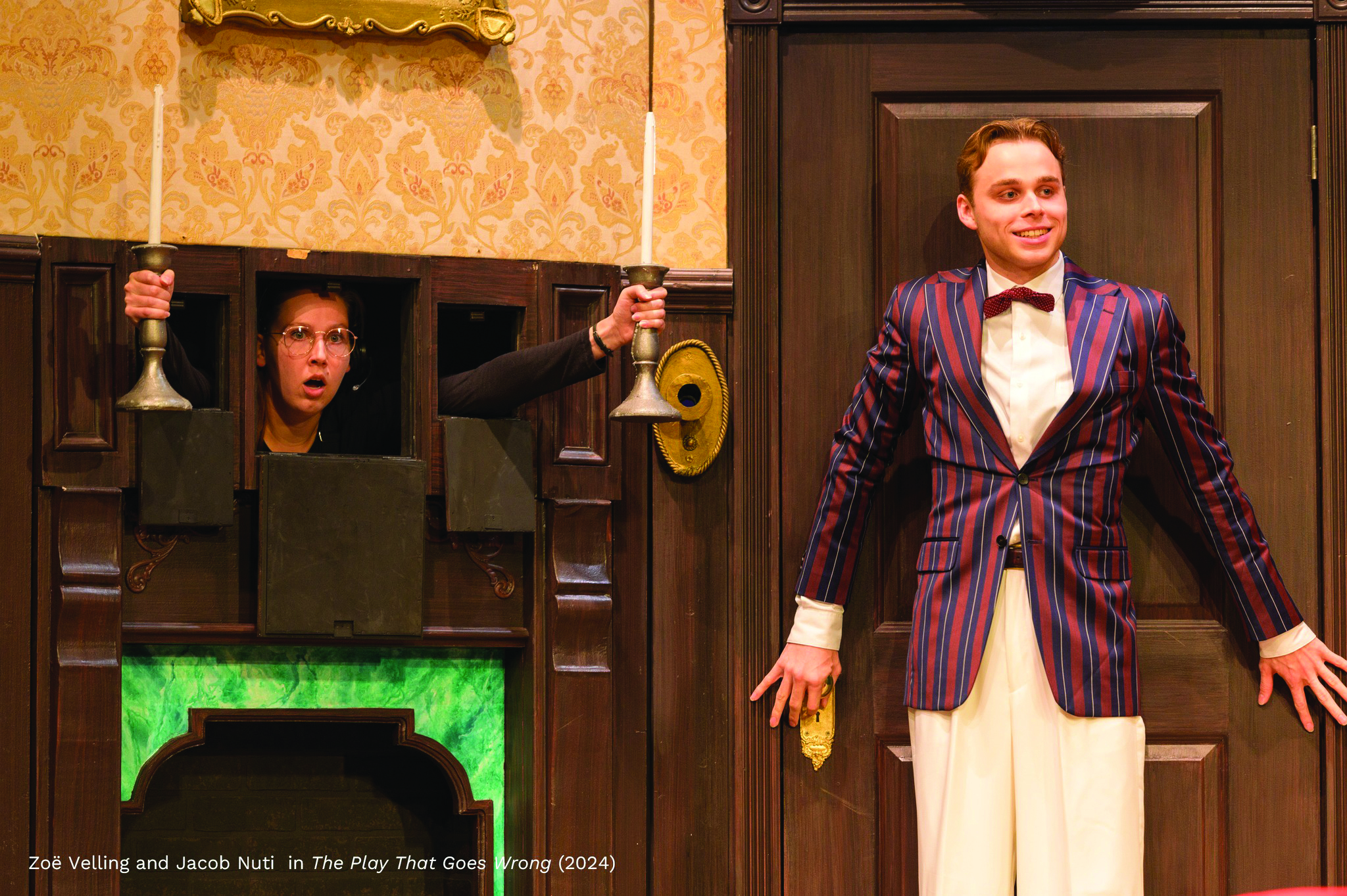

Zoë Velling and Jacob Nuti in 'The Play That Goes Wrong'
In “The Play That Goes Wrong,” chaos is not only scripted - it’s built. For set designers, creating a set that functions as its own character, while literally falling apart on stage, is a thrilling challenge. Every piece of the scenery is meticulously crafted to fail in the most spectacular ways, requiring precise engineering and creativity. From collapsing walls to malfunctioning props, the set plays a starring role, bringing the slapstick humor to life and keeping the audience on the edge of their seats. But what goes into designing a set meant to break down? For the team behind the scenes, it’s all about turning destruction into an art form.
The timing of malfunctions aligning with the script is very precise, and synchronizing the set pieces with the actor’s performance is a role unto itself.
“The timing has everything to do with the strong calling ability of our stage manager Megan Ward. Behind every barometer falling is a crew member with a headset. And behind them is Megan up in the booth, ready to orchestrate each moment precisely,” explained Assistant Stage Manager Brady Willis. “When the creative team refers to the set as another character, it’s the stage manager who animates it all, timing everything the same way an actor would deliver a perfectly timed joke for maximum comedic effect. This comes from hours of teching the show, and trying things out, with input from our director. In this sense, the stage manager is also a performer without any lines.”
And the rehearsal process to ensure the timing of its failures is extremely important and invaluable according to Willis.
“Much credit must be given to our scene shop and props department for providing multiple prototypes of actual props/scenic pieces that allowed director Stephen Schellhardt and the performers to visualize certain gags and gain a feel for things once we moved into the theater,” Willis said. “Additionally, the time we spent on the actual set itself was invaluable. This was apparent to everyone in the room, and we made sure to budget enough time for tech week, including an additional rehearsal block reserved just for the crew members to get their hands on things and to feel comfortable operating everything by the time the actors entered the building.”
These pieces include a mobile window unit and the exact dimensions of the actual window so actors could dive through it in the rehearsal hall, a hollow clock frame which the actors could open and step-inside, and multiple door frames.
“Although the audience will never see these pieces, the time that the skilled crafters put into these pieces benefitted the performers in ways that will be apparent to our patrons,” Willis explained.
Quick thinking and problem solving become a huge component of the success of a failing show. The set of “The Play That Goes Wrong” is a character unto itself, with specific cues, movements and timing of performance. This, coupled with the hilarious timing of the actors, promises to make this show one of the best disasters you will ever see on stage.
“The Play That Goes Wrong” is on stage through Nov. 19. You can get your tickets at www.bartertheatre.com.